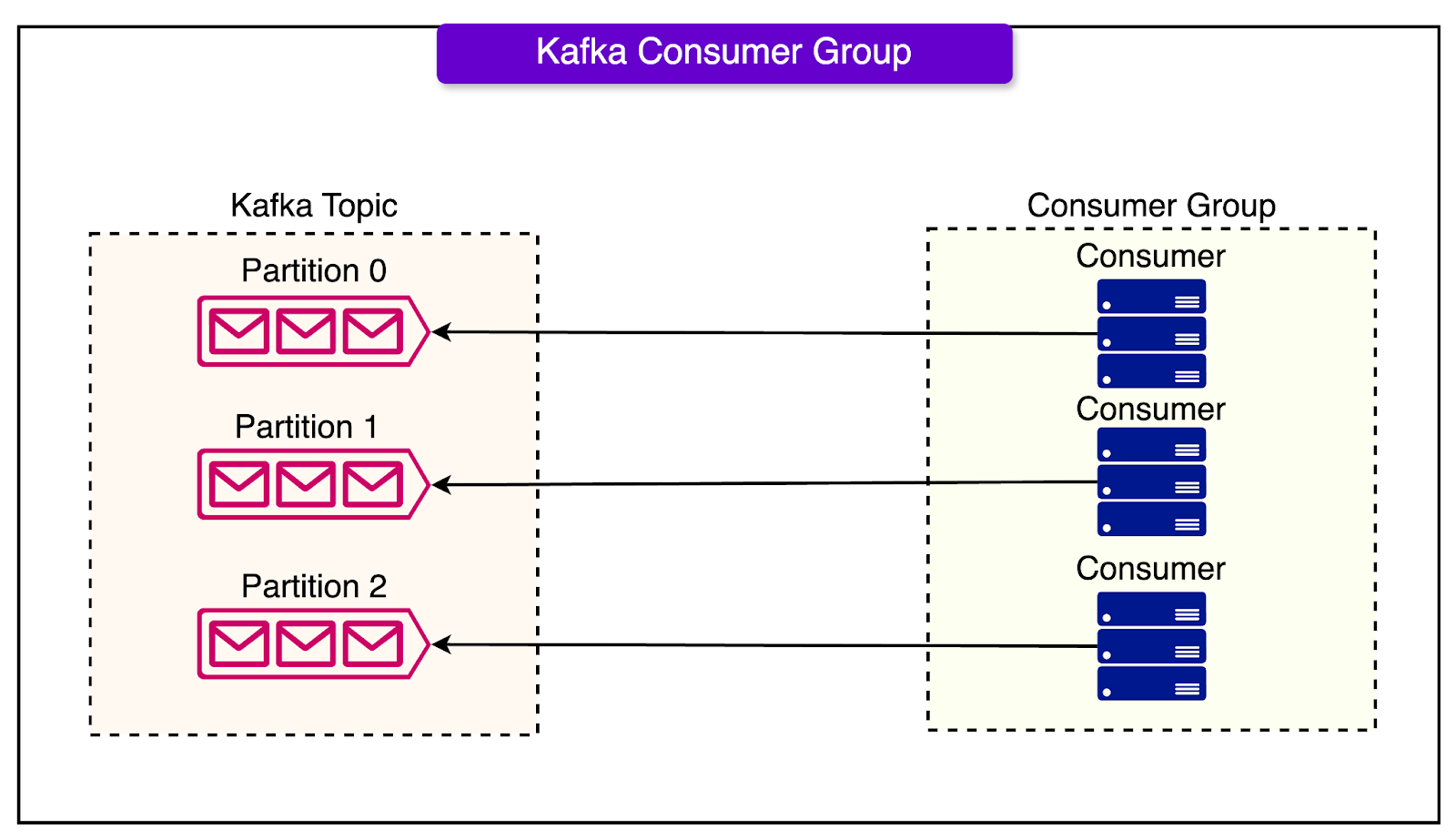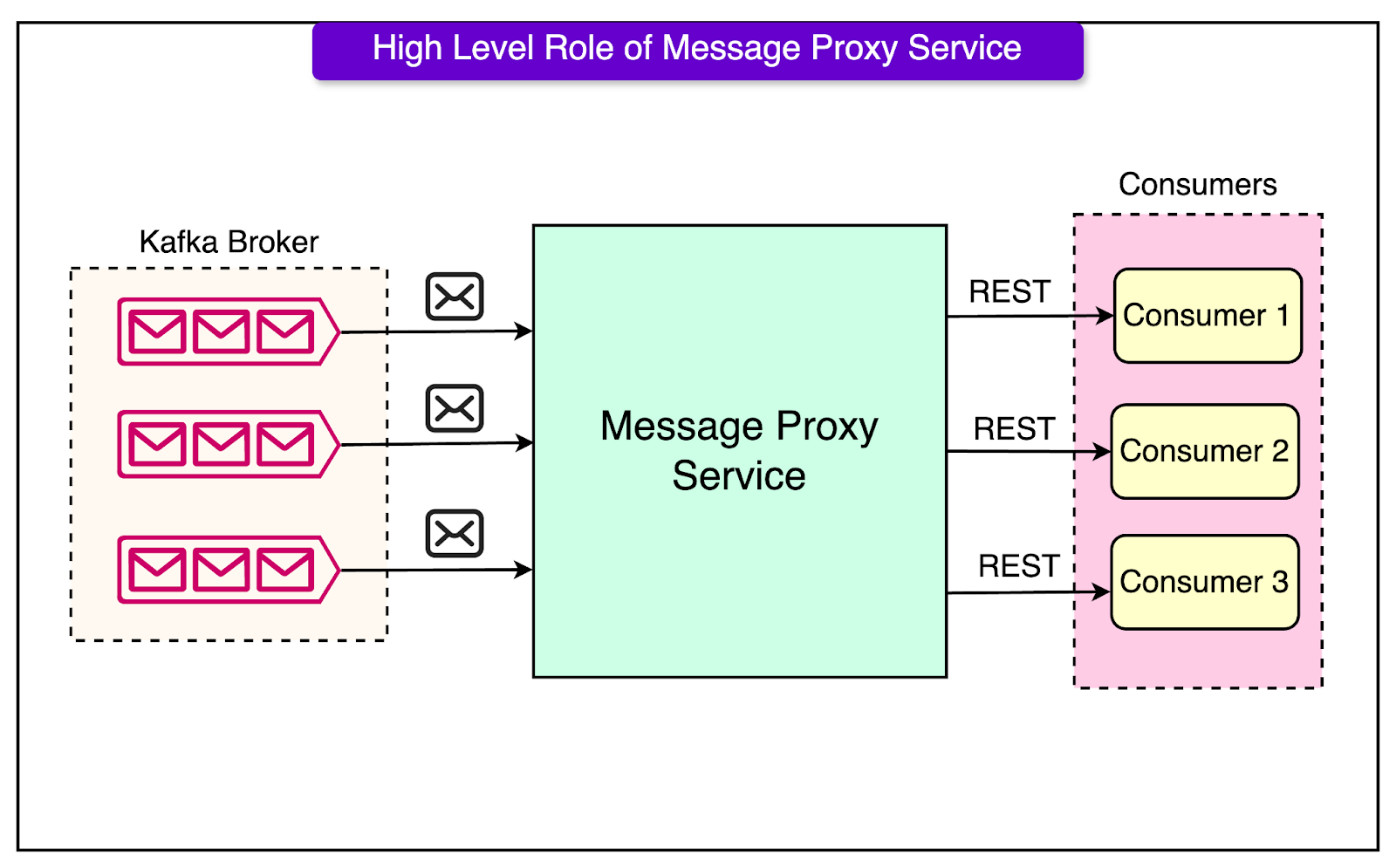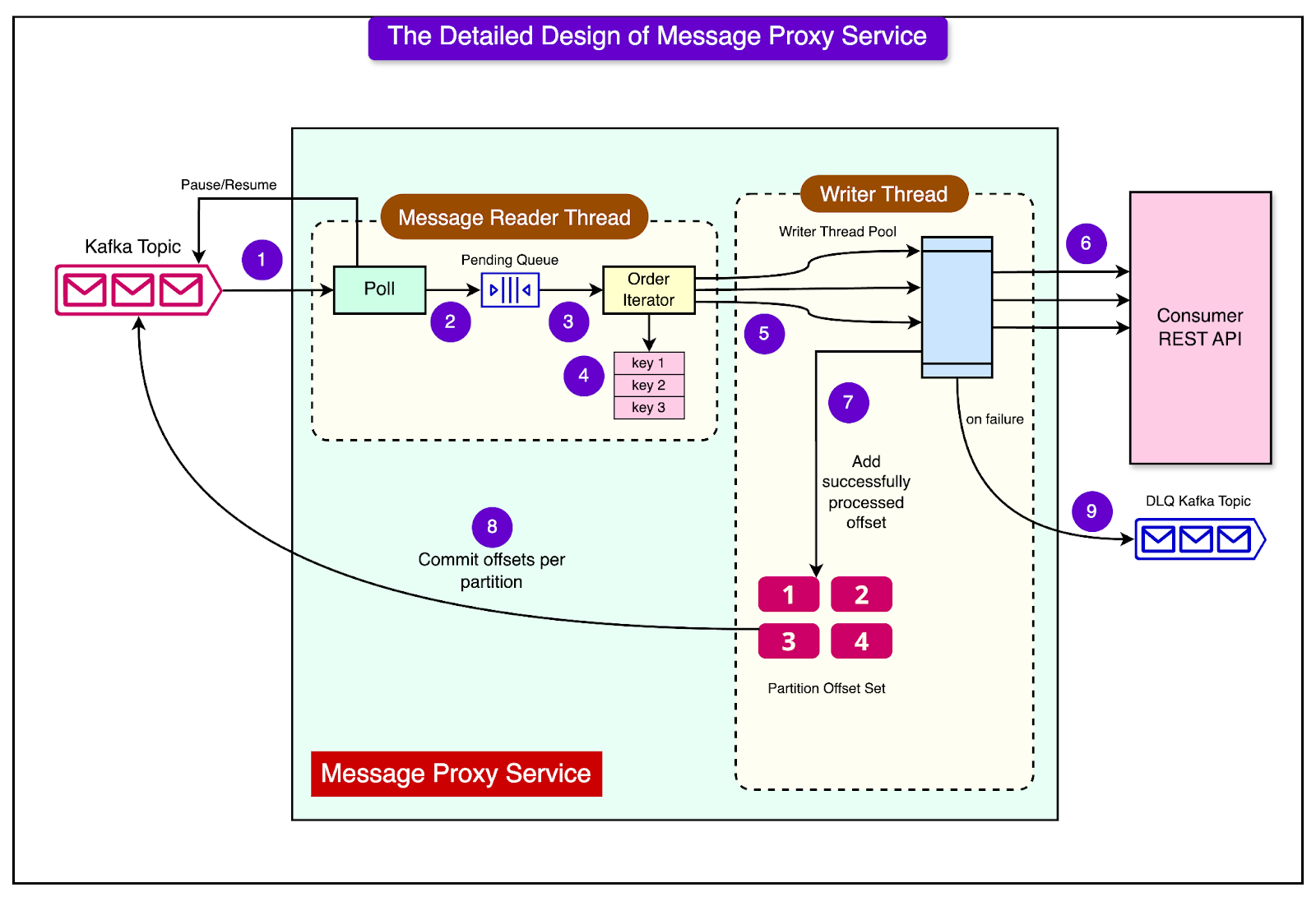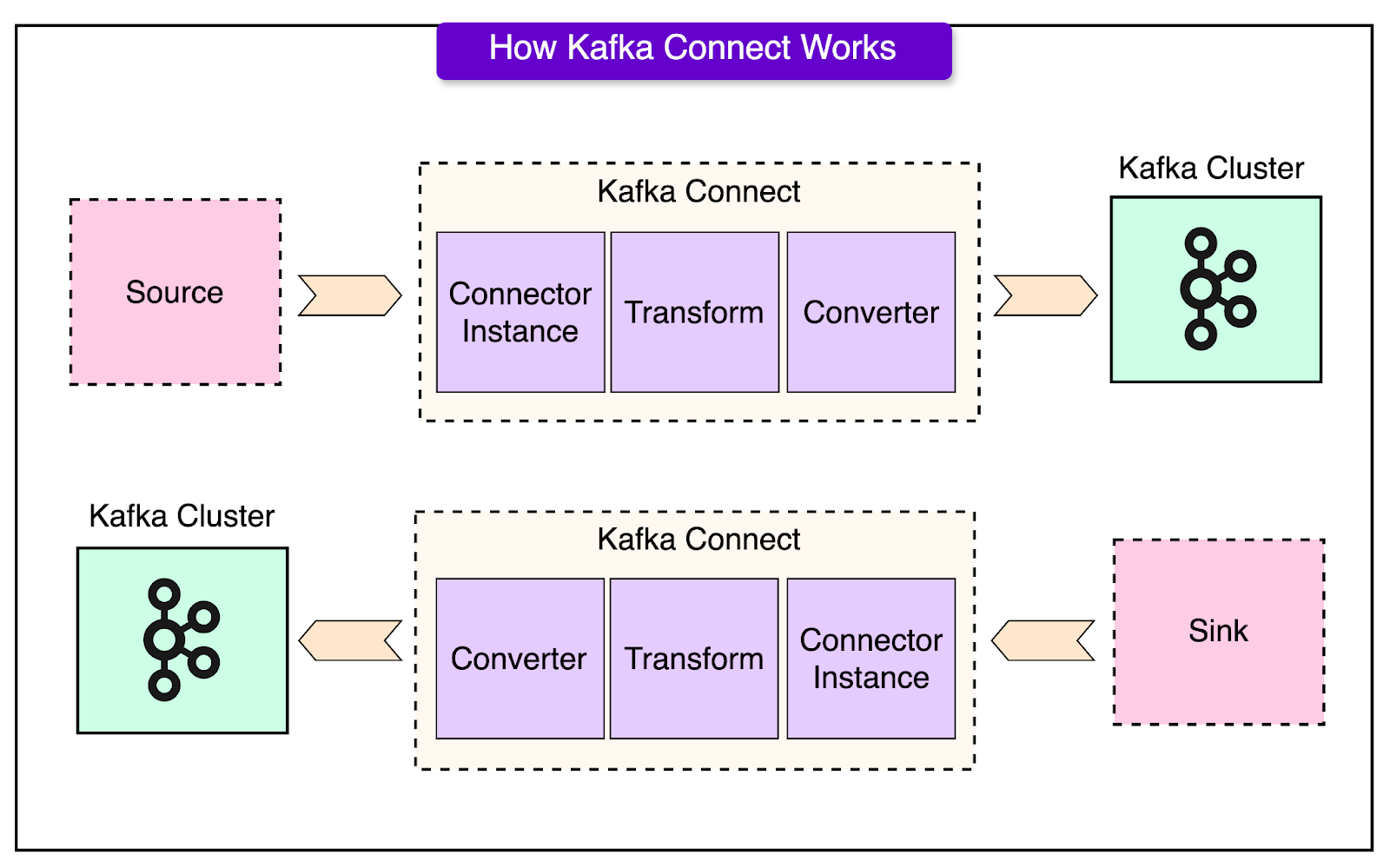- Mailing Lists
- in
- The Trillion Message Kafka Setup at Walmart
Archives
- By thread 5228
-
By date
- June 2021 10
- July 2021 6
- August 2021 20
- September 2021 21
- October 2021 48
- November 2021 40
- December 2021 23
- January 2022 46
- February 2022 80
- March 2022 109
- April 2022 100
- May 2022 97
- June 2022 105
- July 2022 82
- August 2022 95
- September 2022 103
- October 2022 117
- November 2022 115
- December 2022 102
- January 2023 88
- February 2023 90
- March 2023 116
- April 2023 97
- May 2023 159
- June 2023 145
- July 2023 120
- August 2023 90
- September 2023 102
- October 2023 106
- November 2023 100
- December 2023 74
- January 2024 75
- February 2024 75
- March 2024 78
- April 2024 74
- May 2024 108
- June 2024 98
- July 2024 116
- August 2024 134
- September 2024 130
- October 2024 141
- November 2024 171
- December 2024 115
- January 2025 216
- February 2025 140
- March 2025 220
- April 2025 233
- May 2025 239
- June 2025 303
- July 2025 40
The Trillion Message Kafka Setup at Walmart
The Trillion Message Kafka Setup at Walmart
The Enterprise Ready Conference for engineering leaders (Sponsored)The Enterprise Ready Conference is a one-day event in SF, bringing together product and engineering leaders shaping the future of enterprise SaaS. Disclaimer: The details in this post have been derived from the Walmart Global Tech Blog. All credit for the technical details goes to the Walmart engineering team. The links to the original articles are present in the references section at the end of the post. We’ve attempted to analyze the details and provide our input about them. If you find any inaccuracies or omissions, please leave a comment, and we will do our best to fix them. Walmart has a massive Apache Kafka deployment with 25K+ consumers across private and public cloud environments. This deployment processes trillions of Kafka messages per day at 99.99% availability. It supports critical use cases such as:
At Walmart's scale, the Kafka setup must be able to handle sudden traffic spikes. Also, consumer applications are written in multiple languages. Therefore, all consumer applications must adopt some best practices to maintain the same level of reliability and quality. In this post, we’ll look at the main challenges of a Kafka setup at this scale. Then, we will look at how Walmart’s engineering team enhanced its setup to overcome these challenges and reliably process messages cost-efficiently. Challenges with Kafka at Walmart’s ScaleLet’s start with understanding the main challenges that Walmart faced. 1 - Consumer RebalancingOne of the most frequent problems was related to consumer rebalancing. But what triggers consumer rebalancing in Kafka? This can happen due to the changing number of consumer instances within a consumer group. Several scenarios are possible such as:
Consumer rebalancing is needed to ensure partitions are evenly distributed. However, rebalancing can cause disruption and increased latency, particularly due to the near real-time nature of the e-commerce landscape. 2 - Poison Pill MessagesA “poison pill” message in Kafka is a message that consistently causes a consumer to fail when attempting to process it. This can happen due to various reasons such as:
When the consumer encounters such a message, it will fail to process it and throw an exception. By default, the consumer will return to the broker to fetch the same batch of messages again. Since the poison pill message is still present in that batch, the consumer will again fail to process it, and this loop continues indefinitely. As a result, the consumer gets stuck on this one bad message and is unable to make progress on other messages in the partition. This is similar to the “head-of-line blocking” problem in networking. 3 - Cost ConcernsThere is a strong coupling between the number of partitions in a Kafka topic and the maximum number of consumers that can read from that topic in parallel. This coupling can lead to increased costs when trying to scale consumer applications to handle higher throughput. For example, consider that you have a Kafka topic with 10 partitions and 10 consumer instances reading from this topic. Now, if the rate of incoming messages increases and the consumers are unable to keep up (i.e. consumer lag starts to increase), you might want to scale up your consumer application by adding more instances. However, once you have 10 consumers (one for each partition) in a single group, adding more consumers to that group won’t help because Kafka will not assign more than one consumer from the same group to a partition. The only way to allow more consumers in a group is to increase the number of partitions in the topic. However, increasing the number of partitions comes with its challenges and costs.
Designing the Messaging Proxy Service (MPS)To overcome the challenges mentioned in the previous section, the Walmart engineering team designed a Message Proxy Service (MPS). The diagram below shows a high-level view of MPS. The MPS aims to decouple Kafka message consumption from the constraints imposed by Kafka’s partition-based model. It works like this:
The diagram below shows the detailed design of the MPS with all its components Let’s now look at the various components of the MPS in more detail. Reader ThreadThis is a single thread that reads messages from Kafka. It writes the messages from the Kafka broker into a bounded queue called the “PendingQueue”. If the PendingQueue reaches its maximum size, the reader thread will pause reading from Kafka. This is a form of backpressure to prevent the queue from growing indefinitely if the writer threads cannot keep up. Bounded Buffer Queue (PendingQueue)This is a queue that sits between the reader thread and the writer threads. It has a maximum size to prevent it from consuming too much memory. The PendingQueue allows the reader and write threads to work at different speeds. The reader can read messages as fast as Kafka can provide them, while the writers can process them at their own pace. Order IteratorThis component ensures that messages with the same key are processed in the order they were received from Kafka. It goes through the messages in the PendingQueue and skips any message if there is already an earlier message with the same key being processed. At any given time, at most one message per key is being handled by the writer threads. Writer ThreadsThese are a pool of threads that take messages from the PendingQueue and send them to the consumer applications via HTTP POST requests. If a POST request fails, the writer thread will retry the request a few times. If the retries are exhausted or if the consumer application returns certain HTTP codes, the writer thread will put the message into a Dead Letter Queue (DLQ). The writer threads also help manage offsets. They update a shared data structure to keep track of processed offsets. Offset Commit ThreadThis is a separate thread that periodically wakes up (for example, every minute) and commits the Kafka offsets of processed messages using the Kafka consumer API. It checks the shared data structure that is updated by the writer threads. Then, it commits the latest continuous offset for each partition. For example, if messages with offsets 1, 2, 3, and 5 have been processed for a partition, it will commit offset 3 (because 4 is missing). By committing offsets periodically, MPS tells Kafka which messages it has processed successfully. If MPS crashes or is restarted, it will start consuming messages from the last committed offset, avoiding reprocessing messages that have already been handled. Consumer Service REST APIThis is the specification that the actual message consumer applications need to implement to receive messages from the MPS. It defines the format of the HTTP POST request that the MPS writer threads will send (headers, body, etc.). It also specifies the meaning of different HTTP response codes that the consumer application can return. See the table below that shows the API specification:
Implementation of MPSMPS was implemented as a Kafka Connect sink connector. For reference, Kafka Connect is a framework for connecting Kafka with external systems such as databases, key-value stores, search indexes, and file systems. It provides a standard way of defining connectors that move data into and out of Kafka. The diagram below shows a high-level view of Kafka Connect By implementing MPS as a Kafka Connect sink connector, the developers were able to use several features provided by the Kafka Connect Framework such as:
Apart from this, the consumer services (applications that process the messages) are designed to be stateless. This means they don’t maintain any persistent state locally. Any state they need is either passed with the message or stored in an external database. Being stateless allows these services to be easily scaled up or down in Kubernetes based on changes in message volume. If more messages need to be processed, Kubernetes can simply start more instances of the consumer service. If fewer messages are coming in, Kubernetes can terminate some instances to save resources. Importantly, this scaling of the consumer services is independent of MPS and Kafka. MPS continues to read from Kafka and deliver messages to the consumer services regardless of how many instances of the consumer service are running. Additional Points To ConsiderHere are some additional points worth considering based on the MPS solution implemented by Walmart. 1 - Rebalancing of the MPSMPS is also essentially a Kafka consumer. It reads messages from Kafka topics and makes them available to the application consumers via REST endpoints. Like any other Kafka consumer, MPS would also be subject to rebalancing when the number of MPS instances changes. Based on the details, however, it seems that MPS is designed to handle rebalancing gracefully. The separation of the reader thread (which polls Kafka) and the writer threads (which send messages to the REST consumers) is the key here. As long as MPS comes back up quickly after a rebalance, the REST consumers should be able to continue processing messages without substantial lag. The MPS design also includes a bounded buffer (the PendingQueue) between the reader thread and writer threads. This buffer helps to smoothen any temporary fluctuations in the rate at which MPS is reading from Kafka. 2 - Choice of RESTMPS calls REST APIs exposed by the consumer instances. Interestingly, the choice was REST and not something like gRPC. This may be because of the simplicity of REST. Also, REST is widely supported by almost all languages and frameworks. 3 - Potential Increase in ComplexityWhile MPS solves several problems, it also introduces an additional layer to the system. Instead of just having Kafka and the consumer applications, there is now a proxy service in the middle. This means more components to develop, deploy, monitor, and maintain. ConclusionThe implementation of MPS helped Walmart achieve some key improvements.
References: SPONSOR USGet your product in front of more than 1,000,000 tech professionals. Our newsletter puts your products and services directly in front of an audience that matters - hundreds of thousands of engineering leaders and senior engineers - who have influence over significant tech decisions and big purchases. Space Fills Up Fast - Reserve Today Ad spots typically sell out about 4 weeks in advance. To ensure your ad reaches this influential audience, reserve your space now by emailing sponsorship@bytebytego.com © 2024 ByteByteGo |
by "ByteByteGo" <bytebytego@substack.com> - 11:35 - 1 Oct 2024





